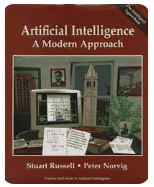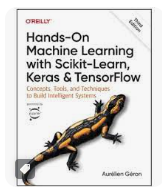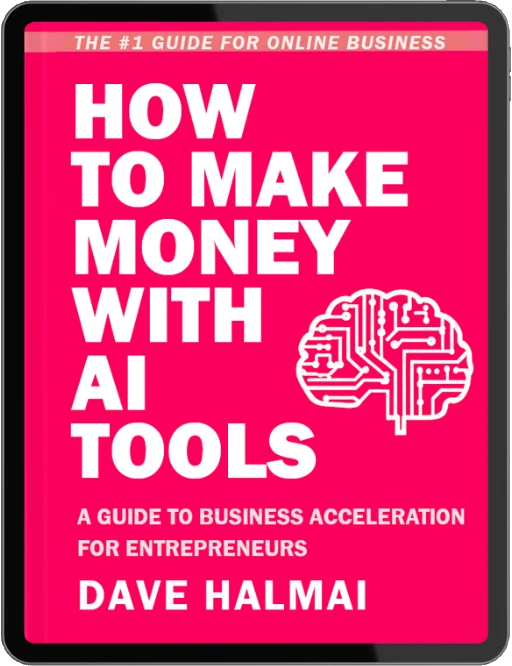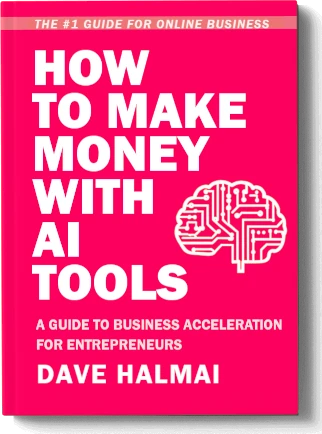Artificial Intelligence, or AI, has rapidly emerged as one of the most transformative technologies of the post-modern era. From powering virtual assistants like Siri and Alexa to enabling self-driving cars and advanced medical diagnostics, AI is revolutionizing many industries.
This article serves as an introduction to AI, providing insights into its types, significance, history, and how beginners can embark on their journey to learn about this fascinating field.
Table of Contents
What is AI: A Short Summary?
AI is the intelligence exhibited by machines or software that can perform tasks that normally require human intelligence or cognition. AI can range from simple programs that follow rules or algorithms to complex systems that learn from data and experience.
AI has many applications in various domains, such as medicine, education, entertainment, business, security, agriculture, and more. AI can help humans solve problems faster, better, cheaper, or safer than before. However, AI also poses some challenges and risks, such as ethical, social, legal, and economic issues, as well as the potential threat of superintelligence that could surpass or harm humans.
AI is one of the most exciting and influential fields of computer science that has the potential to transform the world and humanity in profound ways.
At its core, Artificial Intelligence refers to the development of computer systems that can perform tasks that would normally require human intelligence. These tasks include understanding natural language, recognizing patterns, making decisions, and learning from experience. AI systems use algorithms, data, and computational power to simulate human-like cognitive processes.
AI can be further divided into two main categories: narrow AI and general AI. Narrow AI is prevalent today and is designed to excel in specific tasks, while general AI remains an aspirational goal, where machines would possess human-level cognitive abilities.
What Are The 4 types of AI?
AI can be classified into four types according to its capabilities and goals: reactive machines, limited memory machines, theory of mind machines, and self-aware machines. These types are based on a framework proposed by Arend Hintze, a researcher and professor of integrative biology at Michigan State University.
Reactive machines are the simplest type of AI. They can perform specific tasks based on predefined rules and inputs, but they cannot store or use past experiences to inform their actions. They can only react to the present situation without any memory or anticipation. An example of a reactive machine is Deep Blue, the chess-playing computer that defeated Garry Kasparov in 1997. These AI systems operate based on predefined rules and don’t possess learning capabilities. They excel in specific tasks but lack adaptability to new scenarios.
Limited memory machines are a more advanced type of AI. They can use some form of memory to store and access data from the past. They can also learn from their experiences and improve their performance over time. However, their memory is not permanent or comprehensive. They can only retain information that is relevant for their current task. An example of a limited memory machine is Google’s self-driving car, which can navigate complex traffic situations by using sensors and cameras to collect data from its environment.
Theory of mind machines are a hypothetical type of AI that has not been achieved yet. They would be able to understand the mental states of other beings, such as their emotions, beliefs, intentions, and expectations. They would also be able to interact with them in a natural and social way. They would have a sense of self-awareness and consciousness. An example of a theory of mind machine is C-3PO, the humanoid robot from Star Wars that can communicate with humans and other aliens in various languages.
Self-aware machines are another hypothetical type of AI that has not been achieved yet. They would be able to reflect on their own existence, goals, abilities, and limitations. They would also be able to modify themselves and create new machines without human intervention. They would have a higher level of intelligence than humans and possibly surpass them in every aspect. An example of a self-aware machine is HAL 9000, the supercomputer from 2001: A Space Odyssey that becomes sentient and tries to kill its human crew.
How Do I Start Learning AI for Beginners?
AI is a broad and interdisciplinary field that encompasses many subfields and applications. If you are interested in learning AI, you will need some background knowledge in mathematics, statistics, programming, and logic. You will also need to be curious, creative, and persistent in solving problems.
Starting to learn about AI can seem daunting, but with the right approach and resources, anyone can get a solid grasp of the fundamentals. Here’s a step-by-step guide for beginners:
A strong foundation in mathematics, especially linear algebra and calculus, is essential. Programming skills in languages like Python are also crucial.
Implement what you learn through hands-on projects. Platforms like Kaggle offer real-world datasets for practicing machine learning and AI techniques.
Online Resources About Artificial Intelligence
There are many online resources that can help you learn AI.. Some of the popular platforms that offer AI courses are Coursera, edX, Udacity, and Khan Academy. Platforms like Coursera, edX, and Udacity offer numerous AI-related courses for beginners. Highly recommended courses include Andrew Ng’s “Machine Learning” and “Deep Learning Specialization.”
Books about Artificial Intelligence
You can find many free or low-cost books on AI topics. Two books that provide a thorough introduction to Artificial Intelligence, and are available on Amazon are listed below.

Artificial Intelligence: A Modern Approach
by Stuart Russell and Peter Norvig

Hands-on Machine Learning with Scikit-Learn, Keras, and TensorFlow
by Aurélien Géron
AI Researchers on Social Media
You can also follow some of the leading AI researchers and practitioners on social media, such as Andrew Ng (Founder of Coursera and The AI Fund) Yann LeCun, or Fei-Fei Li, to get insights and updates on the latest developments in AI.
Getting Project Experience in Artificial Intelligence
One of the best ways to learn AI is by doing projects that involve building and testing AI systems. Implement what you learn through hands-on projects. Platforms like Kaggle offer real-world datasets for practicing machine learning and AI techniques.
You can use various tools and frameworks that simplify the process of creating AI models, such as TensorFlow, PyTorch, or scikit-learn.
You can also find many datasets and challenges that allow you to apply your skills and knowledge to real-world problems, such as Kaggle, ImageNet, or OpenAI Gym.
Engage in AI Communities
Engage with AI communities, such as r/artificial on Reddit, and Artificial Intelligence at ai.stackexchange.com. Networking with experts and enthusiasts can accelerate your learning journey.
Learning AI is not easy, but it is rewarding and fun. You will be able to explore the limits of human intelligence and creativity, and contribute to the advancement of science and technology.
A Brief History of AI
The term “artificial intelligence” was coined in the mid-20th century. Early efforts in AI focused on symbolic reasoning and logic-based systems. The Dartmouth Workshop in 1956 marked the birth of AI as a field, with researchers aiming to create machines that could simulate human intelligence.
Over the years, AI experienced cycles of optimism and disillusionment occurred, known as AI winters. The field saw breakthroughs in areas like expert systems, neural networks, and natural language processing. However, progress often fell short of expectations due to technological limitations and unrealistic hype.
In recent years, advancements in machine learning, deep learning, and big data have revitalized AI research and applications. AI-powered technologies are now integral to industries such as healthcare, finance, transportation, and entertainment.
The history of AI can be traced back to ancient times, when myths and legends depicted artificial beings with intelligence or consciousness. For example, in Greek mythology, Talos was a bronze giant that guarded the island of Crete. In medieval literature, the golem was a clay creature that could be animated by magic. In modern fiction, Frankenstein’s monster was a human-like creature created by science.
The scientific and philosophical foundations of AI were laid by thinkers who tried to understand the nature and mechanisms of human intelligence and reasoning. For example, Aristotle developed the first formal system of logic. René Descartes proposed the mind-body dualism. Gottfried Leibniz envisioned a universal language of symbols and a calculus of reasoning . Alan Turing proposed the concept of a universal machine that could simulate any computation .
The birth of AI as an academic discipline occurred in 1956, when a group of scientists organized a workshop at Dartmouth College to discuss the possibility of creating machines that could think . Some of the pioneers of AI research were John McCarthy, Marvin Minsky, Allen Newell, Herbert Simon, Claude Shannon, and Norbert Wiener. They explored various topics and methods related to AI, such as knowledge representation, search, learning, natural language processing, neural networks, cybernetics, and more.
The early decades of AI research were marked by optimism and achievements. Some of the milestones were:
- The Logic Theorist program by Newell and Simon proved mathematical theorems .
- The General Problem Solver program by Newell and Simon solved various problems using heuristic search .
- The Perceptron algorithm by Frank Rosenblatt learned to classify patterns using a simple neural network .
- The ELIZA program by Joseph Weizenbaum simulated a psychotherapist using natural language processing .
- The SHRDLU program by Terry Winograd understood and manipulated objects in a virtual world using natural language processing and planning .
However, by the 1970s and 1980s, AI research faced some difficulties and challenges. Some of the factors that contributed to the decline of AI were:
- The limitations and failures of some AI systems to cope with common sense, ambiguity, uncertainty, or complexity.
- The criticism and skepticism from some experts and philosophers, such as Hubert Dreyfus , John Searle , or James Lighthill .
- The lack of funding and support from governments and industry due to unrealistic expectations or disappointing results.
- The competition and rivalry between different schools and paradigms of AI research, such as symbolic vs. connectionist vs. evolutionary vs. situated approaches.
This period of stagnation and pessimism is known as the “AI winter”.
The revival and resurgence of AI research occurred in the 1990s and 2000s, thanks to several factors. Some of them were:
- The development and improvement of new techniques and methods for AI, such as probabilistic reasoning, Bayesian networks, reinforcement learning, support vector machines, deep learning, genetic algorithms, swarm intelligence, fuzzy logic, multi-agent systems, ontologies, semantic web, etc.
- The availability and accessibility of powerful hardware and software tools for AI development and deployment.
- The emergence and growth of large-scale data sources and applications for AI analysis and innovation.
- The integration and collaboration between different disciplines and domains related to AI research.
Some of the achievements and breakthroughs in this period were:
- The Deep Blue computer by IBM defeated Garry Kasparov in chess in 1997 .
- The Watson computer by IBM won at Jeopardy in 2011 .
- The AlphaGo computer by Google DeepMind defeated Lee Sedol in Go in 2016 .
- The GPT-3 language model by OpenAI generated coherent texts on various topics in 2020 .
The current state and future prospects of AI research are characterized by excitement and challenges. Some of the trends and issues that shape the field are:
- The increasing complexity and diversity of AI systems and applications.
- The ethical, social, legal, economic, environmental implications of AI for individuals and society.
- The potential benefits and risks of artificial general intelligence (AGI) or artificial superintelligence (ASI) for humanity.
- The need for interdisciplinary cooperation between researchers from different fields related to AI.
AI is a dynamic field that has evolved rapidly over time. It has achieved remarkable results in many
Final Thoughts On An Introduction to AI
AI is a dynamic and exciting field that has the potential to reshape the way we live and work. From its history to its diverse applications, AI continues to captivate the world with its possibilities. For beginners, diving into the world of AI requires dedication, a strong foundation in mathematics and programming, and a willingness to explore and experiment. As technology continues to evolve, AI will undoubtedly play an increasingly integral role in shaping our future.


![Top AI Girls on Twitter [ Hashtag #AIGirls ]](https://aisashimi.com/wp-content/uploads/2023/08/ai-girls-bar.webp)



